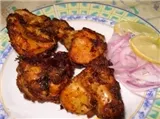Morukari Thrissur style! Now you're looking for a delicious Kerala staple with a unique Thrissur twist. Here's what you need to know:
What is morukari?
Morukari, also known as moru
curry or pulissery, is a yogurt-based curry popular in Kerala. It's typically
light, tangy, and refreshing, perfect for a hot summer day.
What makes Thrissur style
morukari special?
Thrissur adds its own touch to
this dish by:
Using coconut: Unlike some
other regions, Thrissur morukari often features grated coconut added during
tempering or ground into a paste along with spices. This gives it a rich, nutty
flavor.
Spices: While the specific
spice mix can vary, common ingredients include fenugreek, mustard seeds, cumin,
chilies, turmeric, and ginger. This adds a layer of warmth and heat.
Vegetables: While morukari can
be made plain, Thrissur often incorporates vegetables like carrots, pumpkin,
green beans, or even pineapple for a touch of sweetness.
Thicker consistency: Compared
to some other styles, Thrissur morukari tends to be slightly thicker and
creamier, almost like a stew.
How to make Thrissur style
morukari:
There are countless
variations, but here's a basic recipe:
Ingredients:
- 2 cups thick plain yogurt
- 1 cup water
- 1 tbsp coconut oil
- 1 tsp mustard seeds
- 1/2 tsp fenugreek seeds
- 1/2 tsp cumin seeds
- 1-2 dried red chilies
- 10-12 curry leaves
- 1 inch ginger, grated
- 2-3 cloves garlic, minced
- 1/2 tsp turmeric powder
- 1/4 cup grated coconut (optional)
- Salt to taste
- Vegetables of your choice (optional)
Instructions:
Whisk together yogurt and
water.
Heat coconut oil in a pan. Add
mustard seeds, fenugreek seeds, cumin seeds, and chilies. Once they splutter,
add curry leaves, ginger, and garlic. Saute for a minute.
Add turmeric powder and
coconut (if using). Saute for another minute.
Pour in the yogurt mixture and
stir well.
Add salt and vegetables (if
using).
Cook on low heat, stirring
occasionally, until the curry thickens slightly and vegetables are cooked
through.
Serve hot with rice, appam, or
dosa.
Tips:
- You can adjust the thickness of the curry by adding more or less water.
- For a richer flavor, roast the spices before adding them to the pan.
- You can use buttermilk instead of yogurt for a slightly tangier taste.
- Don't let the curry boil, as it can curdle the yogurt.
Whether you're a seasoned
morukari fan or just looking for a new Kerala dish to try, Thrissur style
morukari is definitely worth exploring. Its unique blend of creamy yogurt,
fragrant spices, and fresh vegetables will tantalize your taste buds and leave you
wanting more.








